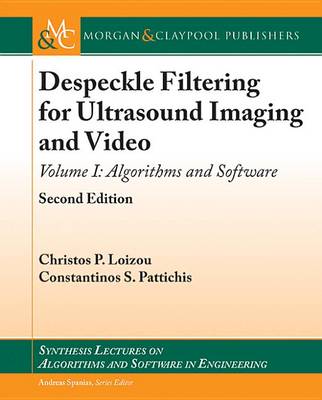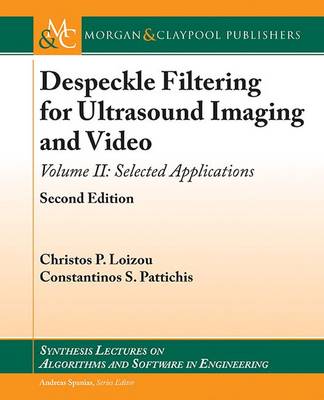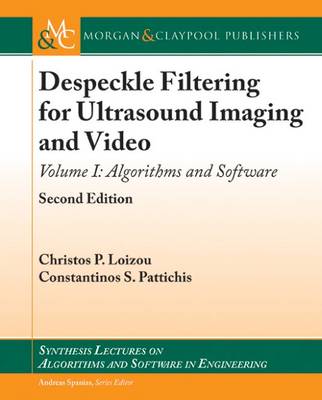Synthesis Lectures on Algorithms and Software in Engineering
3 total works
Despeckle Filtering for Ultrasound Imaging and Video
by Christos P Loizou and Constantinos S Pattichis
Published 1 April 2015
Despeckle Filtering for Ultrasound Imaging and Video, Volume II
by Christos P Loizou and Constantinos S Pattichis
Published 1 August 2015
In ultrasound imaging and video visual perception is hindered by speckle multiplicative noise that degrades the quality. Noise reduction is therefore essential for improving the visual observation quality or as a pre-processing step for further automated analysis, such as image/video segmentation, texture analysis and encoding in ultrasound imaging and video. The goal of the first book (book 1 of 2 books) was to introduce the problem of speckle in ultrasound image and video as well as the theoretical background, algorithmic steps, and the MatlabTM for the following group of despeckle filters: linear despeckle filtering, non-linear despeckle filtering, diffusion despeckle filtering, and wavelet despeckle filtering. The goal of this book (book 2 of 2 books) is to demonstrate the use of a comparative evaluation framework based on these despeckle filters (introduced on book 1) on cardiovascular ultrasound image and video processing and analysis. More specifically, the despeckle filtering evaluation framework is based on texture analysis, image quality evaluation metrics, and visual evaluation by experts. This framework is applied in cardiovascular ultrasound image/video processing on the tasks of segmentation and structural measurements, texture analysis for differentiating between two classes (i.e. normal vs disease) and for efficient encoding for mobile applications. It is shown that despeckle noise reduction improved segmentation and measurement (of tissue structure investigated), increased the texture feature distance between normal and abnormal tissue, improved image/video quality evaluation and perception and produced significantly lower bitrates in video encoding. Furthermore, in order to facilitate further applications we have developed in MATLABTM two different toolboxes that integrate image (IDF) and video (VDF) despeckle filtering, texture analysis, and image and video quality evaluation metrics. The code for these toolsets is open source and these are available to download complementary to the two monographs.
Despeckle Filtering for Ultrasound Imaging and Video, Volume I
by Christos P Loizou and Constantinos S Pattichis
Published 1 April 2015
It is well known that speckle is a multiplicative noise that degrades image and video quality and the visual expert's evaluation in ultrasound imaging and video. This necessitates the need for robust despeckling image and video techniques for both routine clinical practice and tele-consultation. The goal for this book (book 1 of 2 books) is to introduce the problem of speckle occurring in ultrasound image and video as well as the theoretical background (equations), the algorithmic steps, and the MATLABTM code for the following group of despeckle filters: linear filtering, nonlinear filtering, anisotropic diffusion filtering, and wavelet filtering. This book proposes a comparative evaluation framework of these despeckle filters based on texture analysis, image quality evaluation metrics, and visual evaluation by medical experts. Despeckle noise reduction through the application of these filters will improve the visual observation quality or it may be used as a pre-processing step for further automated analysis, such as image and video segmentation, and texture characterization in ultrasound cardiovascular imaging, as well as in bandwidth reduction in ultrasound video transmission for telemedicine applications. The aforementioned topics will be covered in detail in the companion book to this one. Furthermore, in order to facilitate further applications we have developed in MATLABTM two different toolboxes that integrate image (IDF) and video (VDF) despeckle filtering, texture analysis, and image and video quality evaluation metrics. The code for these toolsets is open source and these are available to download complementary to the two books.


